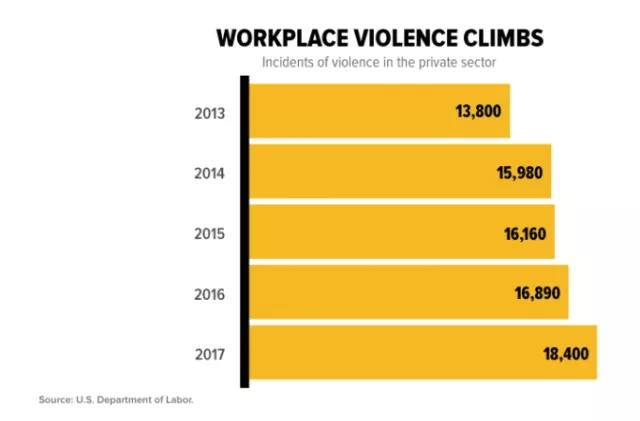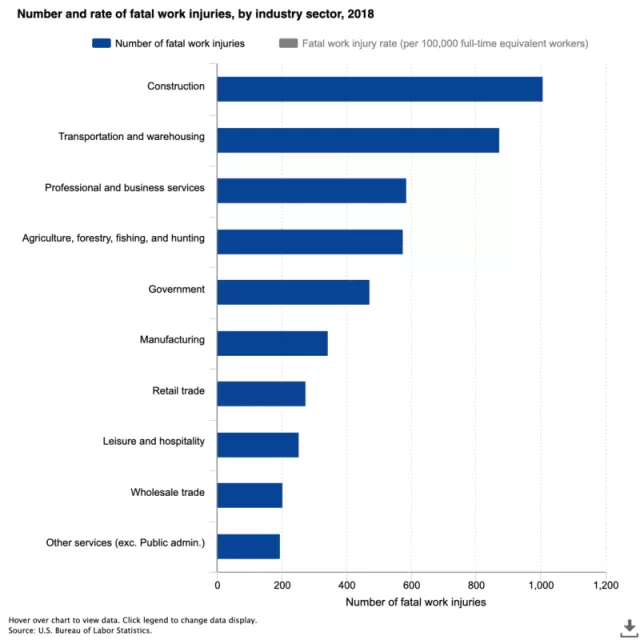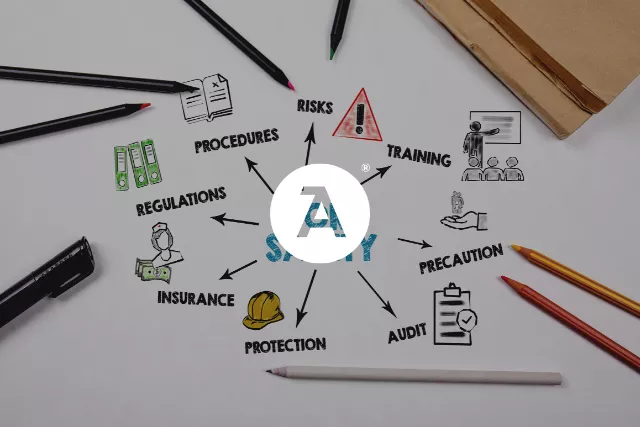Avoiding Workplace Violence with Real-time Intelligence

The topic of workplace violence tends to take over the headlines in the days following an accident, but not every incident hits the news. As stated on the Occupational Safety and Health Administration (OSHA) website, almost 2 million U.S. workers report being a victim of violence at work. And the U.S. Bureau of Labor Statistics reports the annual workplace homicides to hit 400.
Most HR professionals find themselves in a predicament as both the enforcers of workplace violence prevention and sometimes also the objects of employee rage. In their recent research, SHRM revealed that 19% of HR professionals are unsure or don’t know how to respond to a workplace violence incident. While no prevention plan provides comprehensive protection against violence at work, understanding how to prepare for and react to violent behavior is vital.
So what can employers do to safeguard their workers from becoming victims of workplace violence?
The Emerging Trends of Workplace Violence
Media first paid attention to a workplace violence incident back in 1986, when a mailman contractor fatally shot 14 people before killing himself. Different state-level programs and organizations began tracking work-related violence statistics ever since.
Although this and many other incidents at the end of the century were among the most deadly, they didn’t change business operations in the United States. Only in the 1990s things began to shift. At that time, a wave of workplace violence hit such large companies as Ford Motor Company, Luby’s Cafeteria in Texas, and the United States Postal Service.
Suddenly, workplace violence caught the public’s attention and became the subject of discussion in America’s meeting rooms.
Then, school violence emerged as a nationwide matter. Tragedies at Moses Lake, Washington (February 2, 1996), West Paducah, Kentucky (December 1, 1997), and Jonesboro, Arkansas (March 4, 1998), alarmed the American society. Sadly, only after the gruesome shooting at Columbine High School in Colorado in 1999, the need for the creation and administration of effective school violence prevention programs has finally become evident.
The first two decades of the 21st century made it clear that workplace and school violence incidents and prevention efforts have evolved since the early 1990s. Let’s dissect some of the numbers to understand what has changed and how organizations can adapt to the demand of the modern environment.
Types of Workplace Violence and At-Risk Occupations
The concept of workplace safety and how companies need to prepare and respond to emergencies has evolved over the past three decades, but there’s still a gap.
In fact, there’s been an upward trend in mass shootings in the past ten years, increasing by 2.4 times than the decade prior (1998 to 2007). Besides, more than half (57%) of all recorded mass shootings occurred within the past 10 years.
Among the most common reasons for workplace violence are criminal intent, an angry client, a disgruntled employee, a personal relationship gone awry, or an ideology.
Based on the research done by Bureau of Labor Statistics (BLS), 807 workers experienced workplace violence injuries in 2017. Sales, such as cashiers, sales workers and managers, dealt with incidents the most in the same year. The BLS also reported that such professions as movers and other transportation employees (106), executive-level managers (97), truck drivers and law enforcement positions (60) have high numbers of homicides.
Factors That Can Cause Workplace Violence
Below are some of the risk factors that may affect the safety and security of people, according to OSHA.
- Exchanging money with the public
- Working with unstable people
- Interacting with people under the influence
- Performing a job in isolation
- Transporting clients
- Working late-night shifts or in a poorly lit environment with high crime rates
- Lack of incident management of a violence prevention plan
The Economic Impact of Workplace Violence
On average, 500,000 employees miss 1,175,100 workdays each year due to workplace violence, resulting in more than $55 million in lost wages.
Organizations are frequently being held liable for not safeguarding and securing their facilities and operations. Negligent hiring, retention, training or supervising of an employee who went on to commit violence could also lead to potential lawsuits.
Businesses can also face OSHA violation charges. Though there are no specific rules and regulations for workplace violence, companies have obligations under the General Duty Cause of the Occupational Safety and Health Act of 1970. It states that every business “shall furnish to each of his employees employment and a place of employment which are free from recognized hazards that are causing or are likely to cause death or serious physical harm to his employees.”
An employer could be held responsible if a victim or their family can prove the employer knew or should have known the situation was likely to cause serious bodily harm or death, as well as prove there was a reasonable way to avoid the incident. OSHA penalties start at $13,260 per violation and go up to $132,598 for willful and repeat violations.
In addition to OSHA standards, states and cities oftentimes have their own standards for workplace safety. Businesses also need to be in compliance with these regulations wherever they operate or have employees.
What Should Organizations Do
An incident can only take seconds to happen, leaving the aftermath behind. These events are unpredictable and may escalate quickly. The challenge is also amplified by the fact that most modern office spaces are open. And even if there’s a security checkpoint, an assailant could bypass it, and all employees will be left vulnerable to the attack. Notification systems can provide a way to instantly communicate an issue or alert with your employees by location, department or role.
Additionally, being able to access incident management performance gives you insights into how past incidents were handled, along with necessary metrics, such as the summary of responses and any other details.
To summarize, consider implementing the following steps:
- Identify workplace risk and its factors.
- Use security controls.
- Foster culture of preparedness.
- Develop a workplace violence prevention program.
- Provide regular workplace violence prevention training and exercises.
- Implement an incident management system for prompt communication.
In Conclusion
The ultimate goal is to prevent disgruntled insiders or ill-willed outsiders from committing violence by making it hard for them to target your organization. Besides that, is it crucial to make sure your company and workforce are trained to respond to violence so you can avoid any emergency situation.





